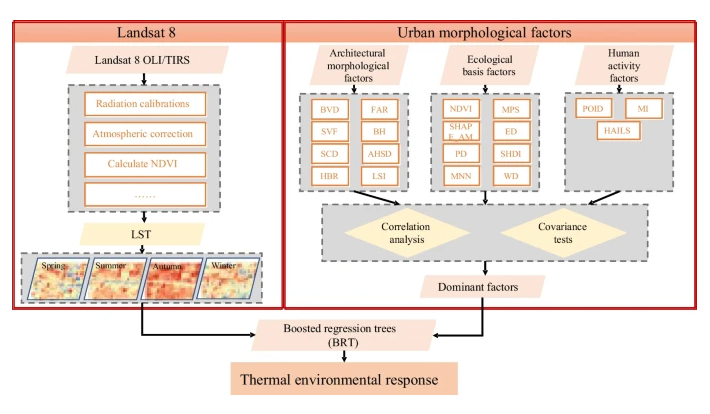Exploring the relationship between seasonal variations of land surface temperature and urban morphological factors in complex urban areas
发表期刊:Environmental Science and Pollution Research
分区:SCI三区
影响因子:5.8
The urban heat island effect is an increasingly serious problem in urban areas. Previous studies suggest that spatial variation in the urban land surface temperature (LST) is determined by interactions among urban morphological factors, but few studies have explored the main factors that affect the LST in different seasons in complex urban areas, especially at a fine scale. By considering the central Chinese city of Jinan as an example, we selected 19 parameters related to the architectural morphological factors, ecological basis factors, and humanistic factors and explored their effects on the LST in different seasons. A correlation model was used to identify the key factors and to analyze the main impact thresholds in different seasons. In the four seasons, the 19 factors all had significant correlations with LST. In particular, architectural morphological factors comprising the average building height and high building ratio had significant negative correlations with the LST in the four seasons. The architectural morphological factors comprising the floor area ratio, spatial concentration degree, building volume density, and urban surface pattern index comprising the mean nearest neighbor distance to green land, as well as humanistic factors comprising the point of interest density, nighttime light intensity, and human activity intensity of land surface had significant positive correlations with LST in the summer and autumn. Ecological basis factors made the main contributions to the LST in the spring, summer, and winter, whereas humanistic factors contributed the most in the autumn. The contributions of architectural morphological factors were relatively low in the four seasons. The dominant factors differed in each season but their thresholds had similar characteristics. The results obtained in this study deepen our understanding of the relationships between urban morphology and the urban heat island effect, and provide practical suggestions for improving the urban thermal environment through reasonable building planning and management.


